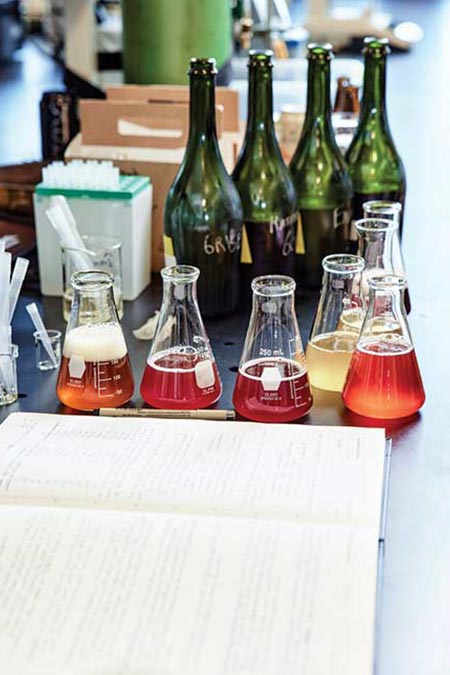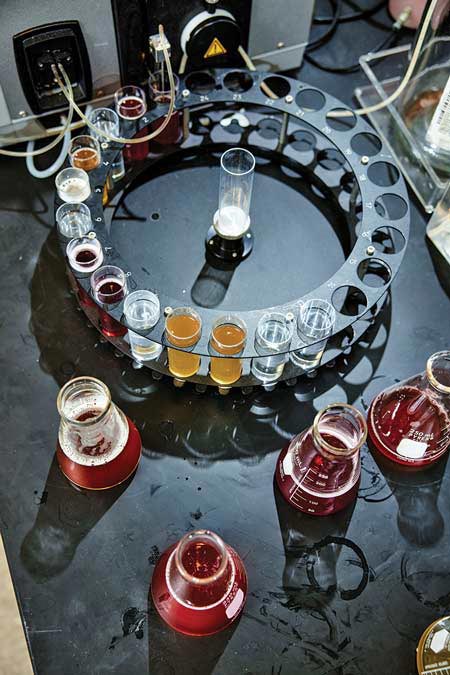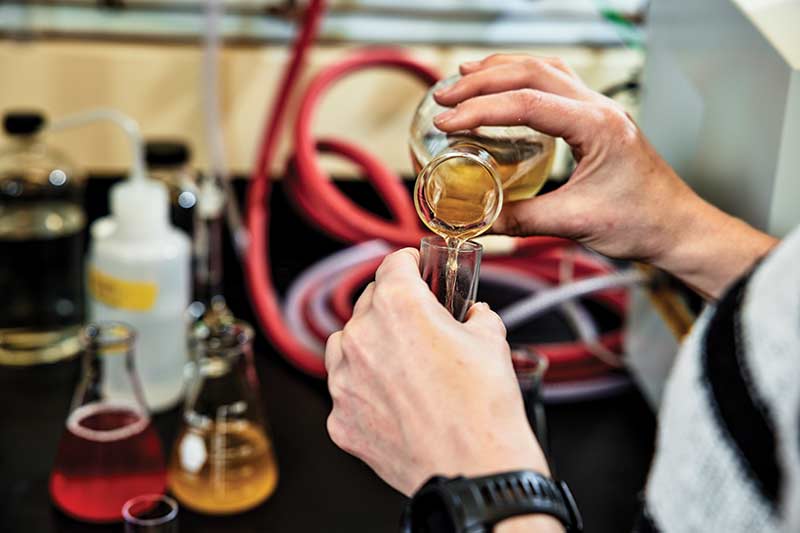By Will Grunewald
Photos by Michael D. Wilson
From our June 2021 issue
Not so long ago, Luci Benedict wasn’t particularly into beer, personally or professionally. A chemistry professor at the University of Southern Maine, her research focused on environmental contaminants — tracking metals in street dust that gets washed into waterways, for instance. Then, she toured Allagash Brewing Company’s quality-control operation. “Zach Bodah, who runs that lab, started talking about all these wishes he had — to measure color, to measure chloride ions,” she recalls. “I had the instruments to do all these things.”
Benedict partnered with the Maine Brewers’ Guild, got a $500,000 Maine Economic Improvement Fund grant through the university, and, in 2016, opened the Quality Control Collaboratory. More than 80 breweries, mostly from Maine but also from elsewhere in New England, have since used her lab’s testing services, from gauging alcohol content to calculating acidity to checking for unwanted microbes. Benedict’s favorite tool is a gas chromatograph. She injects the gasses that beer emits into a tightly coiled tube — 60 meters long, made of glass, and about the width of a human hair. Various chemicals that coat the tube attract different compounds from the gas, creating a chemical profile of the beer. “That’s always the coolest,” Benedict says. “You can taste the beer and get all these flavors, and then you run it on the chromatograph and actually see all those flavors.”




The equipment used in pharmaceutical or forensic or any number of other types of labs is just as useful for analyzing brewskis.
In addition to a full-time lab coordinator, she usually has a staff of six student employees (fewer this year, because of the pandemic) who learn how to use complex instruments that have applications across many scientific disciplines, not just beer analysis. This summer, those lab-trained students are going out and interning on-site at breweries for the first time. They also do original research: One student recently collaborated with an organic chemist to synthesize tetrahydropyridine, a compound that gives off an unwanted Cheerios-ish smell, the first step toward developing an effective test for it. The lab is also teaming up with the engineering department to design a test for dimethyl sulfide — the culprit behind unsavory notes of cooked corn — that brewers could run themselves, without expensive equipment.
Breweries starting from scratch would need to spend hundreds of thousands of dollars to match USM’s capacity. And while a handful of other commercial and academic beer labs exist around the country, there’s advantage in having one nearby. Brewers in the greater Portland area can leave samples in a drop box, and those farther afield can mail samples. Either way, the turnaround time is quick, and Benedict and her staff are always available to answer questions about what tests are needed or how to interpret results.

“We kind of think of the lab as a secret weapon,” Maine Brewers’ Guild director Sean Sullivan says. “The biggest difference between a home brewer and a pro is consistency. And with so much variability in raw ingredients, there’s lots of room for inconsistency.” The guild hosts an annual event, Freshman Orientation, where fledgling breweries pour for a small number of guests, akin to having a focus group. The USM crew comes too, collecting samples that the guild pays to have analyzed for the breweries. “We want the bar to be raised for all Maine breweries,” Sullivan says. “It gets to a level of granularity that the average beer drinker probably won’t notice — maybe looking at gases that create a barely noticeable off-flavor — but that’s when you hit the next level of what it means to be a brewer and really start making world-class beer.”




